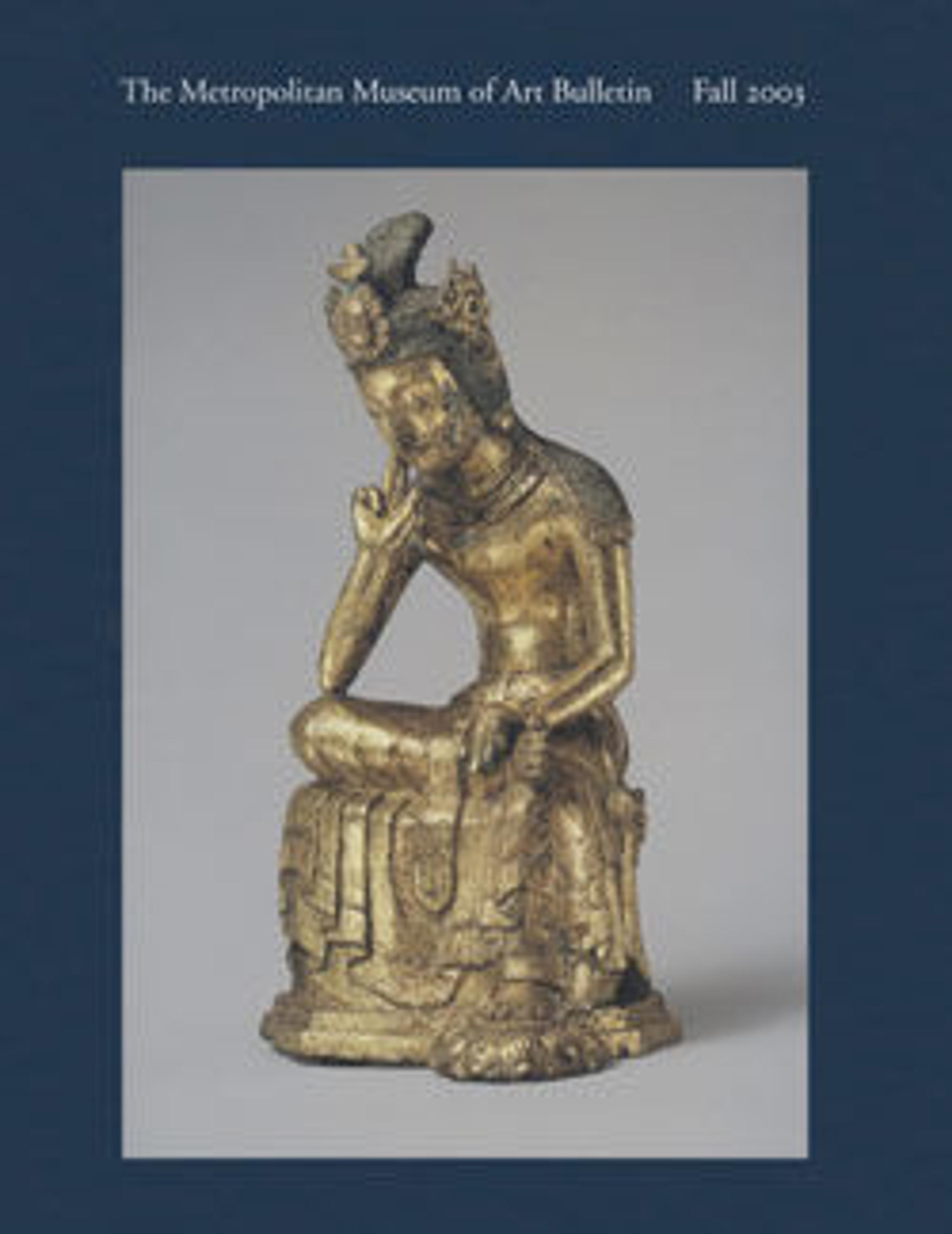Standing cup (coupe Chenavard)
The Sevres factory developed this model of standing cup in 1836 and named it after its designer, Aimé Chenavard. Both its form and its decoration refer directly to French Renaissance metalwork and ceramics, and indeed one of the first coupes Chenavard produced was described in factory records as "a goblet in the 16th century style." The low-relief interlace patterns of the coupe are derived from those found on a type of French Renaissance pottery known as Saint-Porchaire ware. The first piece of Saint- Porchaire pottery to be identified as dating to the sixteenth century was sold at auction in Paris in 1837. It has been suggested that the then director of the Sevres factory was aware of its existence prior to the sale and used it as a source of inspiration for the coupe Chenavard. The exuberant color scheme of the coupe, however, is far removed from the restrained palette of white and browns that characterizes Saint-Porchaire pieces and reflects its nine- teenth-century origin. This coupe was likely the second one produced at Sevres. Archival records indicate that a coupe with this distinctive orange red ground was delivered to Queen Marie- Amelie, wife of King Louis Philippe, in August 1837.
Artwork Details
- Title:Standing cup (coupe Chenavard)
- Manufactory:Sèvres Manufactory (French, 1740–present)
- Designer:Watercolor design sketch by Aimé Chenavard (French, Lyons 1798–1838 Paris)
- Modeler:Plaster model by Hyacinthe Régnier (French, active 1825–63)
- Date:1837
- Culture:French, Sèvres
- Medium:Hard-paste porcelain
- Dimensions:Height: 12 7/8 in. (32.7 cm); Diameter: 13 1/8 in. (33.3 cm)
- Classification:Ceramics-Porcelain
- Credit Line:Purchase, Friends of European Sculpture and Decorative Arts Gifts, 2003
- Object Number:2003.153
- Curatorial Department: European Sculpture and Decorative Arts
More Artwork
Research Resources
The Met provides unparalleled resources for research and welcomes an international community of students and scholars. The Met's Open Access API is where creators and researchers can connect to the The Met collection. Open Access data and public domain images are available for unrestricted commercial and noncommercial use without permission or fee.
To request images under copyright and other restrictions, please use this Image Request form.
Feedback
We continue to research and examine historical and cultural context for objects in The Met collection. If you have comments or questions about this object record, please contact us using the form below. The Museum looks forward to receiving your comments.
